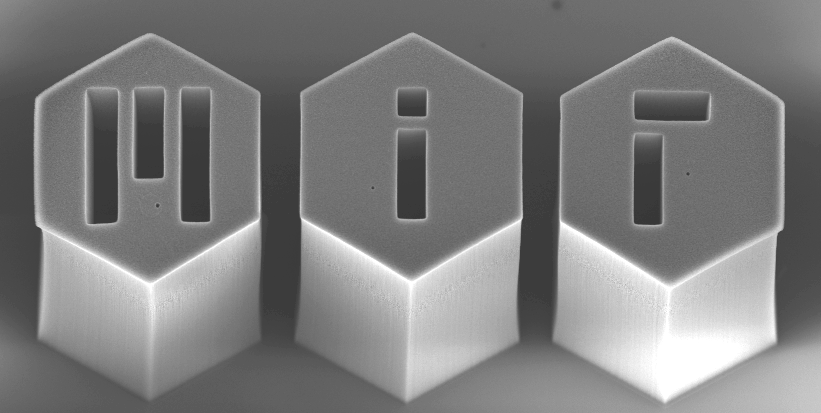R.D. Bennett, A.J. Hart, A.C. Miller, P.T. Hammond, D.J. Irvine, R.E. Cohen. Langmuir 22:8273-8276, 2006. [http://dx.doi.org/10.1021/la061054a]
[PDF]
We report a route for synthesizing patterned carbon nanotube (CNT) catalysts through the microcontact printing of iron-loaded poly(styrene-block-acrylic acid) (PS-b-PAA) micellar solutions onto silicon wafers coated with thin aluminum oxide (Al2O3) layers. The amphiphilic block copolymer, PS-b-PAA, forms spherical micelles in toluene that can form quasi-hexagonal arrays of spherical PAA domains within a PS matrix when deposited onto a substrate. In this report, we dip a poly(dimethylsiloxane) (PDMS) molded stamp into an iron-loaded micellar solution to create a thin film on the PDMS features. The PDMS stamp is then put in contact with a substrate, and uniaxial compressive stress is applied to transfer the micellar thin film from the PDMS stamp onto the substrate in a defined pattern. The polymer is then removed by oxygen plasma etching to leave a patterned iron oxide nanocluster array on the substrate. Using these catalysts, we achieve patterned vertical growth of multiwalled CNTs, where the CNTs maintain the fidelity of the patterned catalyst, forming high-aspect-ratio standing structures.
Disclaimer: The PDF document on this webpage is provided for educational and personal purposes alone and is subject to copyrights of the publisher.

